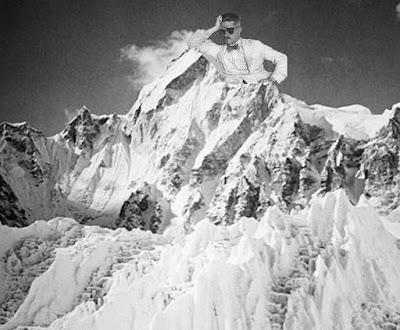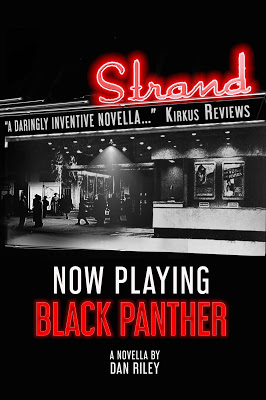Climbing Mt. Ulysses, Part 1: Base Camp

Being somewhat of an Irish Catholic boy, you would think I would have had at least a passing acquaintance with James Joyce by the time I got to college, but I did not. Without benefit of a time machine, I would still wager there were no more than a handful of copies of Joyce’s works anywhere in my hometown…and certainly not in any of our libraries...so I can blame my environment for this lapse. When I got to my second year of college, however, I shared an apartment with Marty Bresnick, a Jewish guy from New York--and wouldn’t you know it? It was Marty who introduced me to Joyce, though not directly. With well-thumbed pages of the paperback behemoth sitting on his lap, Marty would engage in long, deep into the night conversations about Ulysses with friends. They were conversations you earned your way into by reading the book. I knew by the daunting length of it I would never manage to read it to merit a place in those conversations before graduation. So I just listened from a distance. It was like listening to guys back home with their heads under the hoods of their cars discussing camshafts and pistons, except I could care less about cars, but very much wanted to be a literary man. Later in the school year, Marty was featured in the cast of a university production of Joyce’s Portrait of the Artist as a Young Man , giving me a superficial grounding in Joyce. Then by the end of the school year, Joseph Strick’s film version of Ulysses came out, and I had an easy albeit short thread to hang onto whenever this masterpiece of modern literature came up in conversation. Finally the fabulous Fionnula Flanagan directed and starred in a fantastic film in the 1980s called James Joyce’s Women , which rounded out my knowledge of Joyce just enough to get me through the rest of my life being pretty conversant in a writer whose works I had never actually read. Technically I still haven’t read Joyce, but this pandemic pushed me to do things I’ve long wanted to do but hadn’t. So I downloaded audio books of Portrait of the Artist and Ulysses and gave my ears wholly over to both...Yes...yes.... As I’ve written before, when it comes to audio books, you end up judging the narration as much as the writing--for better and worse. In this case it was for much the better. Colin Farrell’s reading of Portrait of the Artist was transcendent. As much as I enjoyed the book itself, I found myself going back to listen to Farrell read random passages just for the lilt of his lovely Irish voice. It has become my go-to remedy for sleepless nights…as close as I’ve ever come to having bedtime stories read to me.
When it came time to advance from ascending the Denali that was Portrait of the Artist to the Everest that is Ulysses, I hoped to find as good a guide as Farrell to take me to the top. In the Audible book version I found two guides—the magnificent Jim Norton who reads all of the parts of the book which do not come directly from Molly Bloom and Marcella Riordan who reads Molly with all the slyness and sensuality the part demands. There are some who may say that taking Ulysses audibly is like taking a chair lift up Everest, but I would argue with this new experience behind me that Joyce, like Shakespeare, is meant to be heard not read to appreciate the musicality of his writing. There are those long passages where he seems to lose “the plot” and resorts to endless listings of names…trees, streets, saints, lovers, random items in a drawer…random lady things on a trunk:
“What miscellaneous effects of female personal wearing apparel were perceived by him?A pair of new inodorous halfsilk black ladies’ hose, a pair of new violet garters, a pair of outsize ladies’ drawers of India mull, cut on generous lines, redolent of opoponax, jessamine and Muratti’s Turkish cigarettes and containing a long bright steel safety pin, folded curvilinear, a camisole of batiste with thin lace border, an accordion underskirt of blue silk moirette, all these objects being disposed irregularly on the top of a rectangular trunk, quadruple battened, having capped corners, with multicoloured labels, initialled on its fore side in white lettering B. C. T. (Brian Cooper Tweedy).”You no more have to struggle with the “sense” of those passages than you do with the chords of the Moonlight Sonata. You just let it wash over you. That would be my first advice to anyone who wants to follow my approach to climbing Ulysses. Get the Norton/Riordan reading available on Audible and when you put it on, let it play like a symphony…go where the motifs take you and don’t fret if you get lost…trust the narrators and the writer to deliver you to the breathtaking views at the top. I also revisited that 1967 film version, which seems only available on You Tube. It’s highly abridged of course…and the Nighttown sequence unfolds as if in a Fellini film if Fellini had been born Irish and less talented. But it does help in navigating the book by providing a map of the general mountainscape and its trenchant twists and turns. Finally the Gutenberg Project offers a free, searchable complete text which I have found invaluable in going back to clarify, review, or just see the printed words--as I guess Joyce intended. Though, it should be said, he was a musician, which leads me to believe that had he written in the last half of the 20th century rather than the first half, Ulysses may have been born a two-record set competing with double album giants Dylan's Blonde on Blonde and the Beatles White Album for pop prominence. Completing Ulysses has taken the longest standing item off my bucket list, and I can’t fully express what a relief and rewarding achievement it’s been. This summer I’ve had the extraordinary experience of having two cultural events exceed my expectations despite enormous hype about both. The first was watching the film version of Hamilton on the Fourth of July, the second was Ulysses which has now claimed top spot on my list of books to be shipwrecked with on a desert island. These have been truly remarkable, soul-salvaging experiences in a summer of blood-curdling dismay and despair. In posts to come, I’ll try to address some of the qualities, attributes and utter surprises of Ulysses that have so filled me with a sense of wonder and discovery at an age when such a sense would seem to have been long past spent.
Yes, how dare I...but here's a word from my own humble effort: Now Playing Black Panther

Published on August 18, 2020 18:18
No comments have been added yet.



